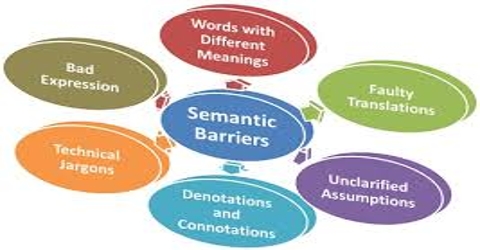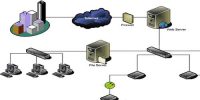Semantic barriers in Communication:
Semantics is the branch of linguistics dealing with the meaning of words and sentences. It occurs when the sender and receiver have different understandings of the message sent. Semantic barriers are concerned with problems and obstructions in the process of encoding and decoding of message into words or impressions.
Normally, such barriers result on account of use of wrong words, faulty translations, different interpretations etc. These are discussed below:
(i) Badly expressed message: Sometimes intended meaning may not be conveyed by a manager to his subordinates. These badly expressed messages may be an account of inadequate vocabulary, usage of wrong words, omission of needed words etc.
(ii) Symbols with different meanings: A word may have several meanings. Receiver has to perceive one such meaning for the word used by communicator.
(iii) Faulty translations: Sometimes the communications originally drafted in one language (e.g., English) need to be translated to the language understandable to workers (e.g., China). If the translator is not proficient with both the languages, mistakes may creep in causing different meanings to the communication.
(iv) Technical jargon: It is usually found that specialists use technical jargon while explaining to persons who are not specialists in the concerned field. Therefore, they may not understand the actual meaning of many such words.
(v) Body language and gesture decoding: Every movement of body communicates some meaning. The body movement and gestures of communicator matters so much in conveying the message.















